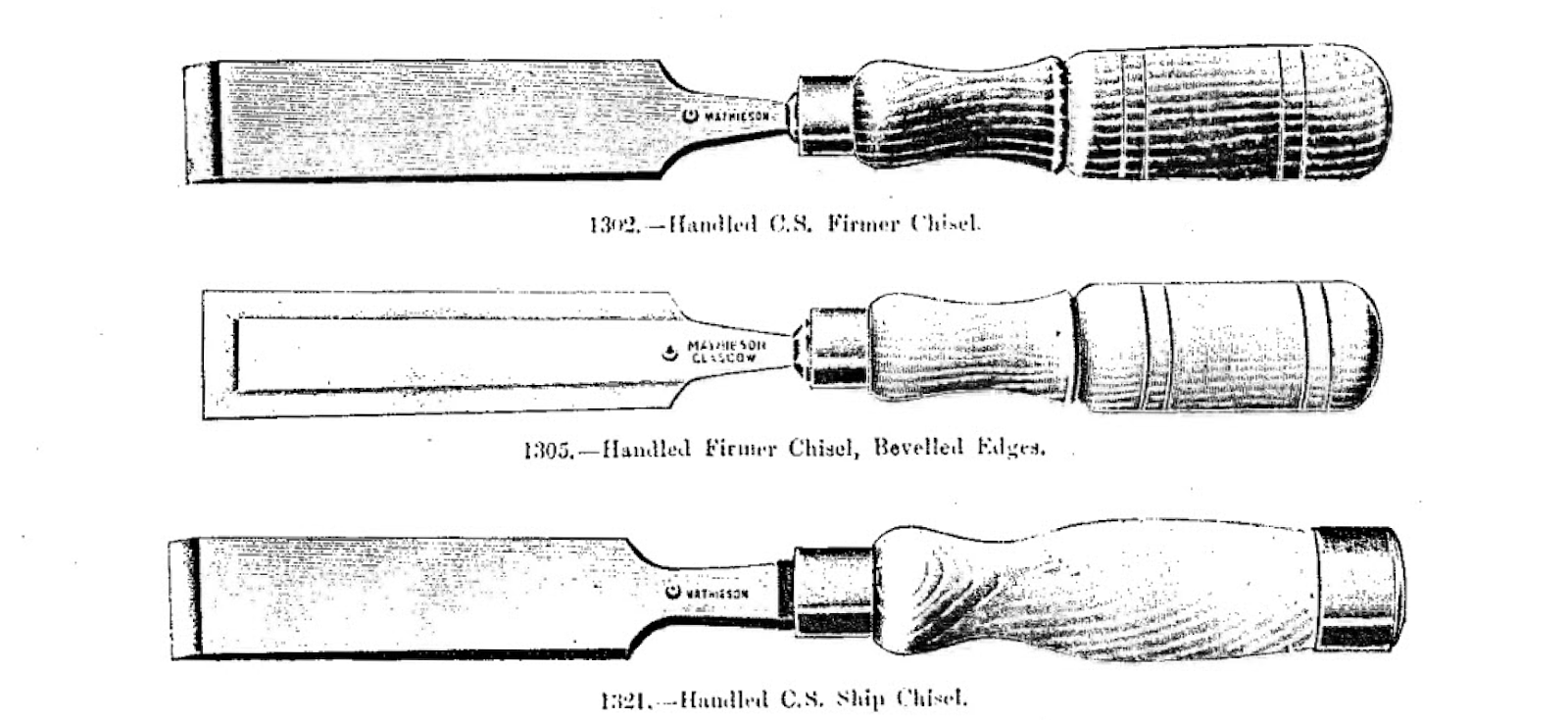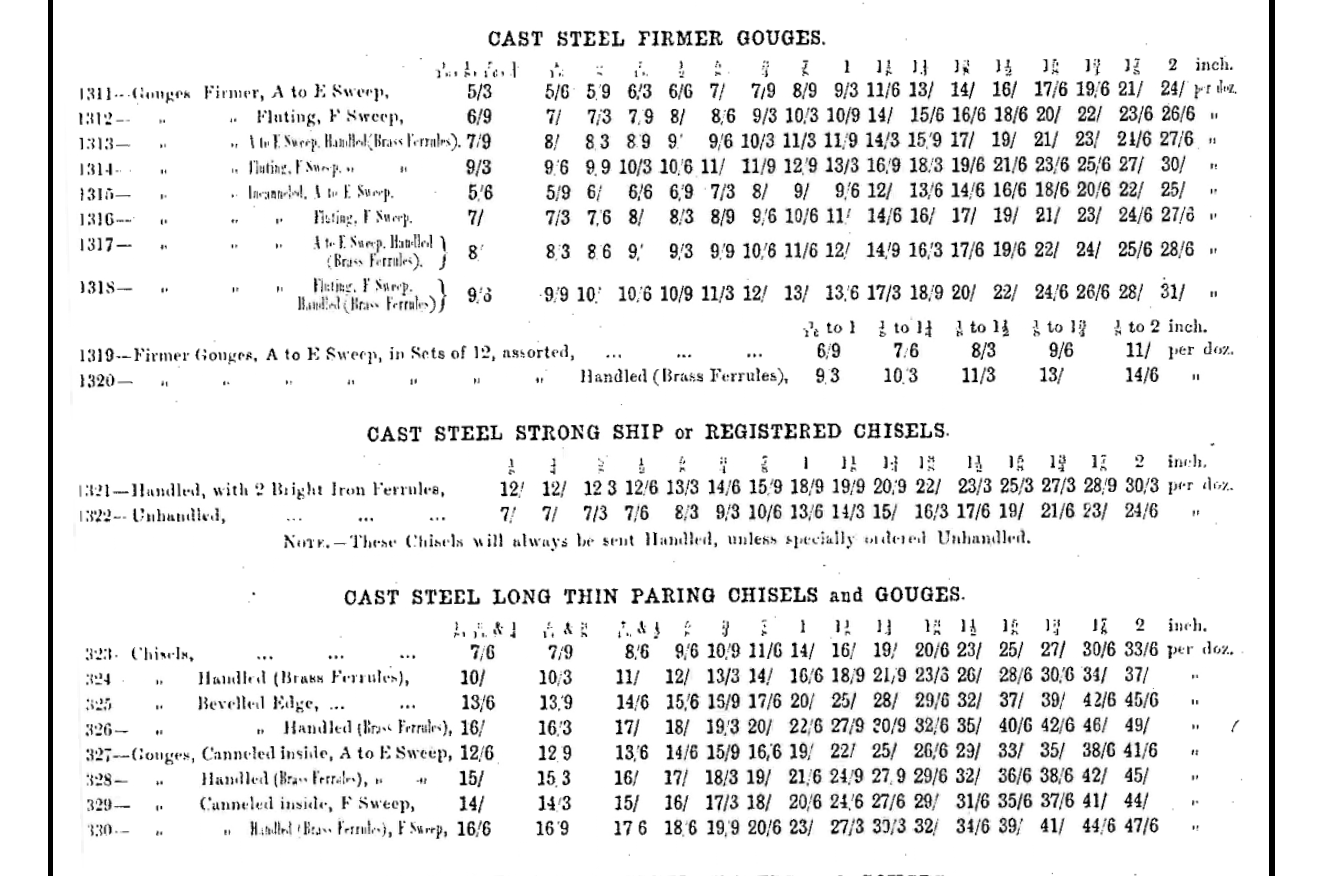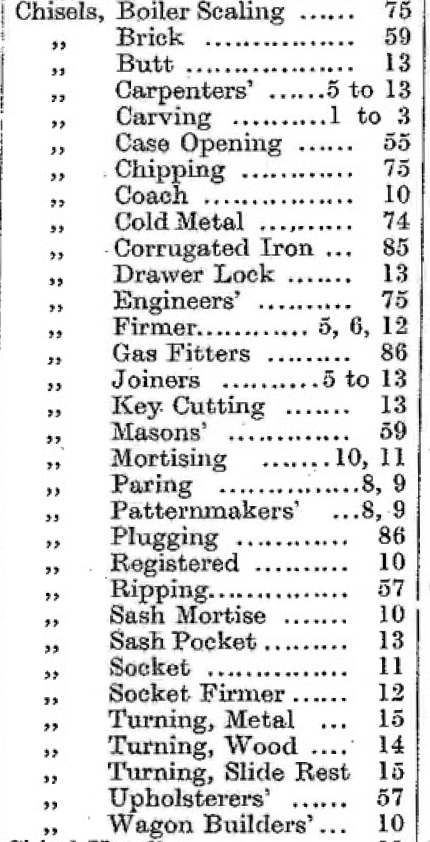I looked at some old catalogues from the turn of the 20th century to find out what a "Registered" firmer was. The Howarth catalogue from 1884 lists firmer, bevel edge firmer, and registered chisels.
No pics but the first clue is that it is only offered handled and the description mentions 2 ferrules

Mathieson (around 1900?) shows a chisel with a hoop on the end of the handle and a thick neck. The image refers to a "Ship chisel" (suggesting rougher work?) but the subsequent price list refers to "strong ship or registered chisels":


Marples 1928
two ferrules + a leather washer

so there you have it - "registered" means a stout firmer chisel with an extra hoop to prevent splitting and an optional shock absorbing leather washer. Around the start of the 20th century at least it seems the key chisel names are:
* Firmer = general purpose chisel (with option for bevelled edges)
* Registered = heavy duty firmer
* Mortise = stout chisel with a oval bolster and handle (aka "pig sticker")
* sash mortise = light weight mortise chisel with round bolster
* paring = long and thin (bevelled or flat)
these are all nicely illustrated in the 1925 Melhuish catalogue - not sure I am allowed to share a screenshot so here is the link:
http://www.toolemera.com/catpdf/melhuish1925CAT.pdf
now we just need to know what the rest of these are:

No pics but the first clue is that it is only offered handled and the description mentions 2 ferrules
Mathieson (around 1900?) shows a chisel with a hoop on the end of the handle and a thick neck. The image refers to a "Ship chisel" (suggesting rougher work?) but the subsequent price list refers to "strong ship or registered chisels":
Marples 1928
two ferrules + a leather washer
so there you have it - "registered" means a stout firmer chisel with an extra hoop to prevent splitting and an optional shock absorbing leather washer. Around the start of the 20th century at least it seems the key chisel names are:
* Firmer = general purpose chisel (with option for bevelled edges)
* Registered = heavy duty firmer
* Mortise = stout chisel with a oval bolster and handle (aka "pig sticker")
* sash mortise = light weight mortise chisel with round bolster
* paring = long and thin (bevelled or flat)
these are all nicely illustrated in the 1925 Melhuish catalogue - not sure I am allowed to share a screenshot so here is the link:
http://www.toolemera.com/catpdf/melhuish1925CAT.pdf
now we just need to know what the rest of these are:





